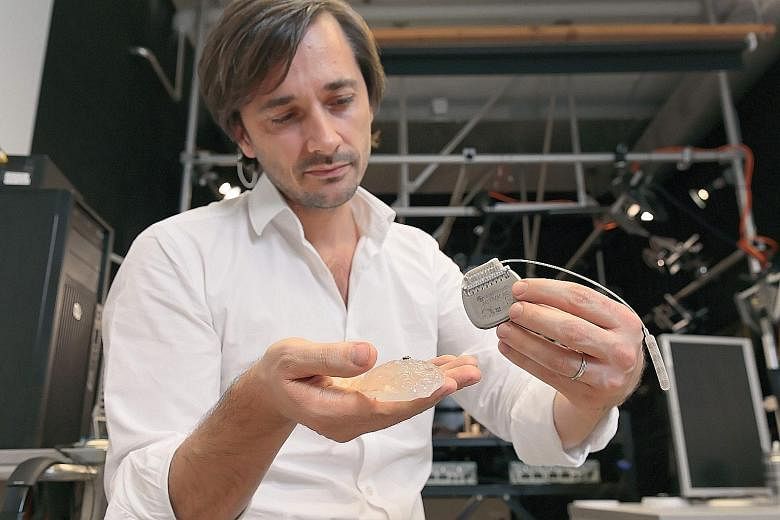GENEVA • Monkeys with spinal cord damage that paralysed one leg have quickly regained the ability to walk with a wireless connection from the brain to the spinal cord below the injury.
The achievement is yet another advance in the rapidly moving field of technological treatments for spinal cord damage.
In recent years, scientists have achieved brain control of robotic hands in monkeys and humans, helped a paralysed man regain some use of a hand through a chip implanted in his brain, and used electrical stimulation of nerves to enable paralysed rats to walk again.
The new system is unusual because it concentrates on the lower body and allows a monkey - and perhaps in the near future a human - to use a wireless system rather than be tethered to a computer. It uses new developments in brain recording and nerve stimulation.
It requires a computer to decode and translate brain signals and send them to the spinal cord, but a wearable device is feasible.
Professor Gregoire Courtine of the Swiss Federal Institute of Technology said on Wednesday that he hopes the system he and his colleagues have developed could be transferred "in the next 10 years" to humans for therapy that would aid in rehabilitation and "improve recovery and quality of life".
But, he emphasised, the goal is better rehabilitation, not a science- fiction fix for paralysis. "People are not going to walk in the streets with a brain-spine interface" in the foreseeable future, he said.
Among the reasons that the system is not a miracle fix for paralysis is that it relays only impulses to extend and bend the leg at the right time to fit into a four-legged gait, not other, more subtle movements involving change in direction or navigating obstacles. Humans present different challenges, for instance, in terms of balance in two-legged, rather than four-legged, walking.

The research was conducted with collaborators in China, Prof Courtine said, because Swiss restrictions on animal experiments at the time would not allow the work. He said he now has permission for similar experiments in Switzerland.
He said this kind of work cannot be pursued in people without testing in other primates first. The brain recording and the stimulation of the spinal cord involve devices already in use in humans for other purposes. Only the brain-decoding software has not been used with people.
Professor David Borton of Brown University, a primary author of the new report, developed the wireless sensor with colleagues before he started working with Prof Courtine. Combined with microelectrodes, it records and transmits impulses in the part of the brain where signals to move the leg originate. Prof Borton said one of the reasons the system may be helpful in rehabilitation is that it strengthens remaining connections between parts of the spinal cord and the injured limb.
The brain-recording device was combined with electrical stimulation to an area just outside the spinal cord that conveyed signals to the reflex system. Walking is only partly under brain control. The spinal cord has its own system for receiving input from the legs and responding. Humans do not think about walking most of the time, and it is not that the brain is running the activity below conscious awareness. The spinal cord and reflex system are running much of it.
NYTIMES

